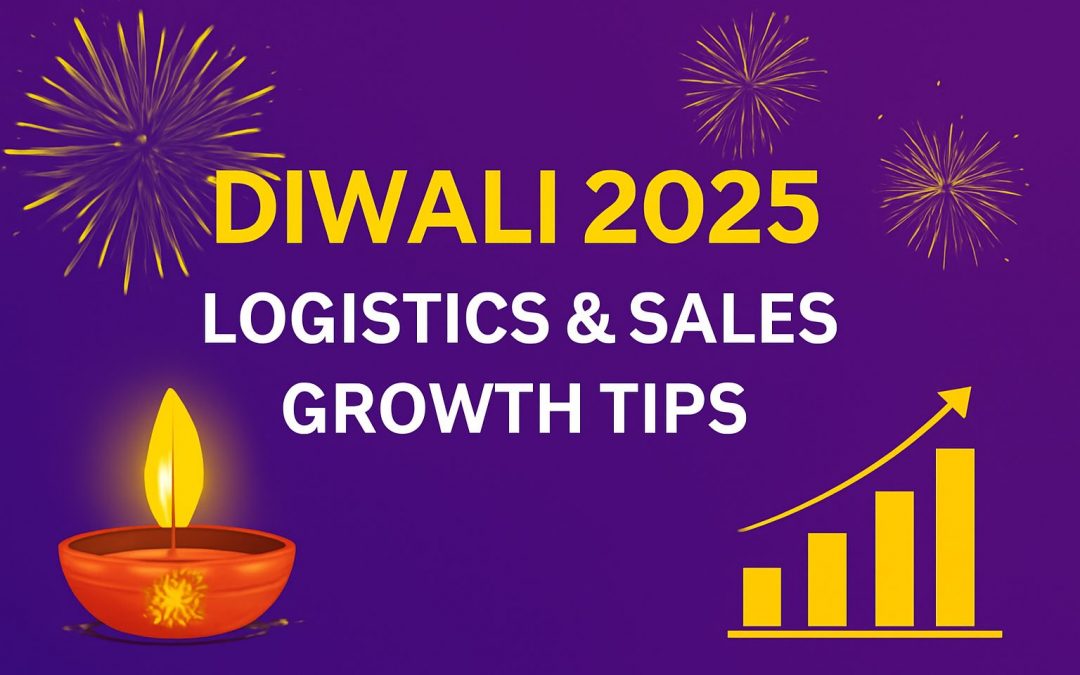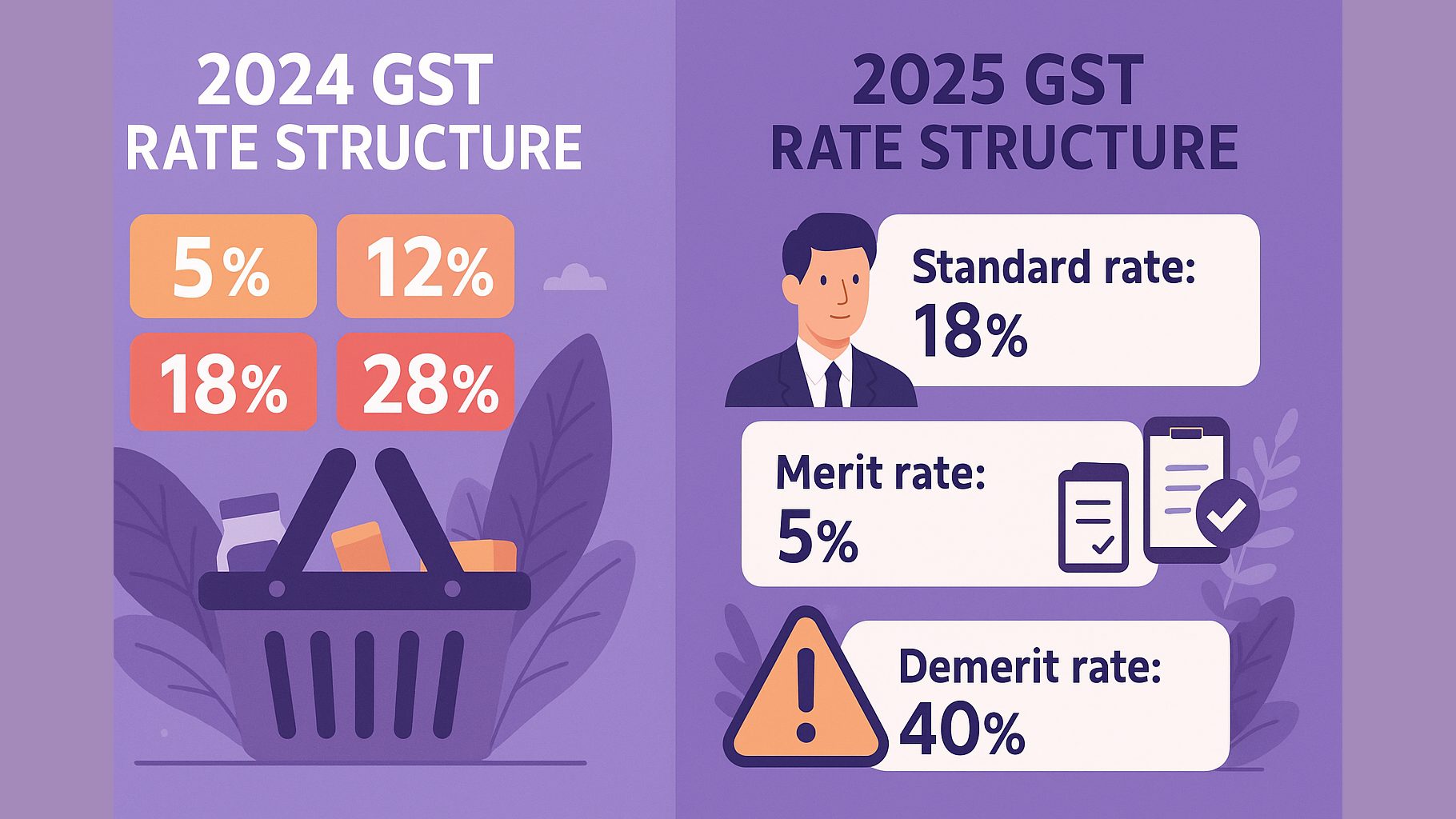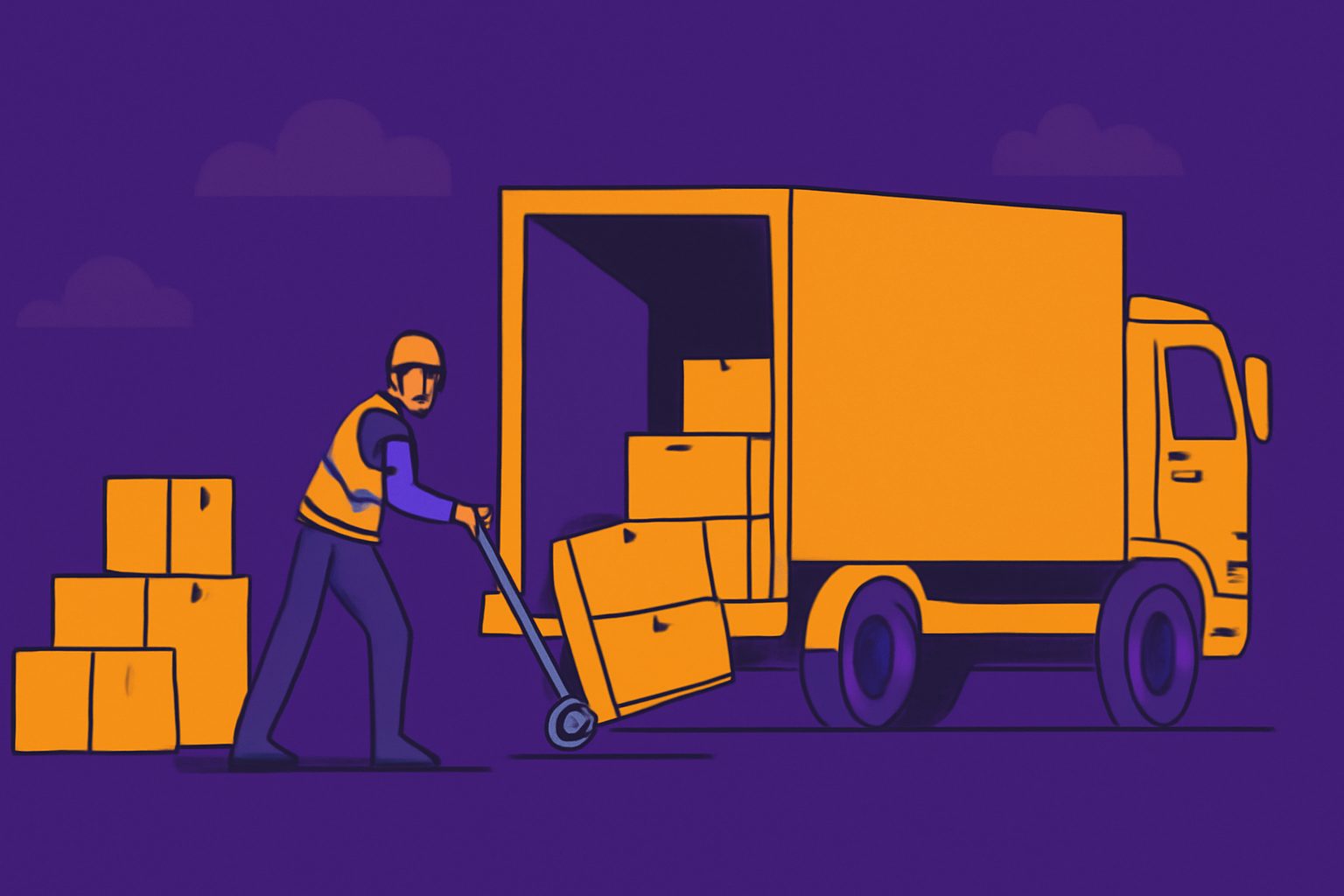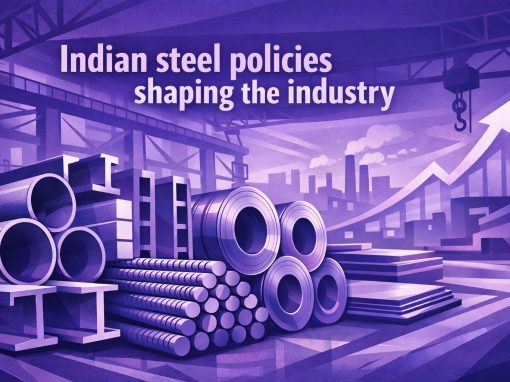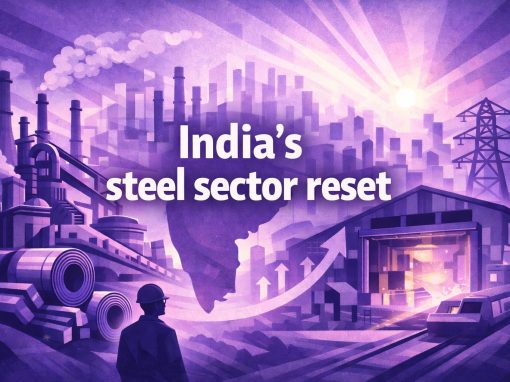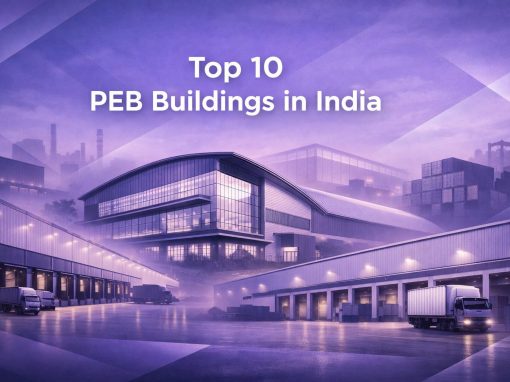Table of Contents
During Diwali 2025, MSMEs have the unique opportunity to boost sales and grow their businesses. They need to be able to quickly meet the needs of their customers during the busy holiday season. Let’s talk about how MSMEs can do that this festive season. We also explore how MSMEs can adopt GST 2.0 and other government reforms for long-term success.
Significance of Diwali 2025 for MSMEs in India
Diwali is a very important time for MSMEs because demand significantly increases. The festive season often plays a decisive role in shaping the annual performance of a business, with many MSMEs relying on this period to achieve substantial sales growth and ensure long-term business sustainability. As a result, managing inventory, cash flow, and timely production become essential for success.
A successful Diwali 2025 for an MSME can mean:
More Sales and Money: Diwali is a great time for small and medium-sized businesses (MSMEs) because people want to buy things. This has a big effect on the annual earnings of any business.
Long-term Growth and Brand Loyalty: The way MSMEs do during Diwali 2025 can have a long-term effect on how well they do every year. Meeting customer needs not only increases sales, but it also makes people more loyal to your brand, which will help a business grow in the coming months too.
More Visibility in the Market: MSMEs get more attention from customers during Diwali, which helps them get new customers, build brand recognition, and grow their presence in the market. This can help businesses grow over time.
Role of MSMEs in India’s Economy
Narendra Modi, the Prime Minister, has always said how important MSMEs are to India’s economy. In his most recent speech, he talked about how important MSMEs are again, calling them the “backbone of the economy.” PM Modi’s promise to the sector comes at a very important time because MSMEs are a big part of India’s recovery from the pandemic and its growth path.
PM Modi said that the government wants to help MSMEs by making changes. The most important of these are the new GST 2.0 reforms that went into effect on September 22, 2025. He said that these changes are a big step towards making India self-sufficient (Aatmanirbhar Bharat). The government wants to help MSMEs succeed by simplifying the tax system, lowering the tax burden, and making business operations run more smoothly. This fits with Modi’s call for self-reliance, which pushes MSMEs to make high-quality goods that make India look good around the world.
The Prime Minister also connected this vision to the Make in India programme, which promotes MSMEs making high-quality goods that not only meet demand in India but also do well in other countries. His call for Indians to be proud of products made in India, which is a swadeshi value, adds to this push.
These actions highlight the government’s commitment to creating an environment for MSME growth.
Impact of GST 2.0 on Diwali 2025 for MSMEs
The introduction of GST 2.0 on September 22, 2025, just ahead of Diwali, significantly impacts MSMEs in India. The reform, aimed at simplifying the tax structure and reducing compliance burdens, offers substantial benefits to MSMEs during the festive season.
Key GST 2.0 Reforms Benefiting MSMEs
Simplified Tax Structure: The GST system has been streamlined from four slabs (5%, 12%, 18%, and 28%) to two primary rates: 5% and 18%, with a special 40% rate for luxury and sin goods. This simplification reduces confusion and administrative costs for MSMEs.
Lower Tax Rates on Basic Goods: The GST rates on basic goods such as food, medical supplies, and school supplies have been cut to 5% or even 0%. This cut makes it cheaper for MSMEs to make or sell these goods.
Lower GST on Electronics and Cars: The GST on small cars and two-wheelers has dropped from 28% to 18%. There is now an 18% GST on TVs and air conditioners with screens larger than 32 inches. These cuts can help small and medium-sized electronics and automotive businesses sell more.
Exemptions on Health Insurance: There is no GST on health insurance premiums anymore. This could make health care cheaper for MSME workers and lower the costs of giving employees benefits.
Simplified Compliance and Faster Refunds: It is now easier for MSMEs to keep track of their money by making the GST registration and Input Tax Credit (ITC) refund processes faster.
Broader Economic Implications of GST 2.0 on MSMEs
The changes to GST 2.0 should add about ₹2 lakh crore to the economy, which will boost demand during Diwali 2025. The goal is to help MSMEs compete better by lowering taxes and making the tax system easier to understand. This will help them get more customers and maybe even take over the market.
GST 2.0 is a great opportunity for MSMEs to improve their operations, save money, and take advantage of the extra money people spend during Diwali 2025. These changes can help small and medium-sized businesses grow and contribute to the broader goal of a self-reliant India.
Preparing for Diwali 2025
As Diwali 2025 approaches, MSMEs across India are aligning their business practices with the latest government reforms to ensure a successful festive season. By integrating key policy changes into their daily operations, MSMEs can optimise their processes, reduce costs, and capitalise on the increased demand during the festive period.
Here’s a breakdown of how MSMEs can adapt to government reforms in preparation for Diwali 2025:
| Reform/Policy | Action by MSMEs | Expected Outcomes |
| GST 2.0 Reforms |
|
|
| Access to Credit |
|
|
| Make in India |
|
|
| Digital Transformation Initiatives |
|
|
| Swadeshi Initiative |
|
|
By integrating these policies into their operations, MSMEs can position themselves to leverage the full potential of the Diwali season. The combination of improved cash flow, tax savings, and operational efficiencies will provide MSMEs with the tools they need to thrive during this critical time.
Planning Logistics for Diwali 2025
Efficient logistics planning is crucial to ensure timely deliveries and cost-effective operations, especially during festive months. Understanding the nuances of Full Truckload (FTL), Partial Truckload (PTL), and Less-than-Truckload (LTL) shipping models can help MSMEs make informed decisions tailored to their specific needs.
Full Truckload (FTL)
FTL involves dedicating an entire truck to a single shipment, offering direct routes and faster delivery times.
Ideal for:
- Large shipments that can fill an entire truck.
- High-value or fragile goods requiring minimal handling.
- Time-sensitive deliveries.
Pricing Factors:
- Distance: Longer distances may reduce per-kilometer costs.
- Weight and Volume: Heavier and bulkier shipments may qualify for better rates.
- Seasonal Demand: Rates can fluctuate during peak seasons like Diwali.
Benefits for MSMEs:
- Faster delivery times.
- Reduced risk of damage due to less handling.
- Cost-effective for large shipments.
Partial Truckload (PTL)
PTL allows multiple shippers to share space in a single truck, making it cost-effective for medium-sized shipments.
Ideal for:
- Shipments that are too large for LTL but not enough to fill an entire truck.
- Businesses with regular, medium-sized shipments.
Pricing Factors:
- Weight and Dimensions: Larger shipments within the PTL range may incur higher costs.
- Distance: Longer distances can increase costs.
- Handling Requirements: Special handling needs may add to the price.
Benefits for MSMEs:
- Cost savings by sharing transportation costs.
- Flexibility in shipping schedules.
- Suitable for medium-sized businesses with consistent shipping needs.
Less-than-Truckload (LTL)
LTL involves sharing truck space with other shipments, making it ideal for smaller loads.
Ideal for:
- Small shipments that do not require an entire truck.
- Businesses with infrequent or irregular shipping needs.
Pricing Factors:
- Weight and Dimensions: Heavier or bulkier items may incur higher costs.
- Distance: Longer distances can increase costs.
- Delivery Timeframe: Faster delivery requirements may lead to higher rates.
Benefits for MSMEs:
- Cost-effective for small shipments.
- No need to wait for a full truckload.
- Suitable for businesses with varying shipping volumes.
Comparative Overview of the 3 Shipping Models
| Model | Shipment Size | Cost Efficiency | Delivery Speed | Ideal For |
| FTL | Large | High | Fast | Bulk shipments |
| PTL | Medium | Moderate | Moderate | Regular, medium-sized shipments |
| LTL | Small | Low | Variable | Infrequent, small shipments |
Logistics Tips for MSMEs for Diwali 2025
Assess Shipment Size: Determine the volume and weight of your goods to choose the appropriate shipping model.
Consider Delivery Timeframes: Align your shipping model with your delivery deadlines to ensure timely arrivals.
Evaluate Cost vs. Benefit: Balance cost savings with delivery speed and handling requirements to optimize logistics.
Plan Ahead: Anticipate the festive demand surge and plan your shipments in advance to avoid delays.
Partner with Reliable Carriers: Work with trusted logistics providers to ensure smooth operations during the peak season.
Key Strategies for MSMEs to Maximise the Diwali 2025 Rush
As with any major festive season, MSMEs must be proactive in addressing challenges that arise. With the surge in demand, it’s essential to streamline operations and adopt strategies that boost efficiency and profitability. Below are key strategies that MSMEs are adopting to maximise the Diwali rush:
Faster, Smarter Billing Systems
- Challenge: The Diwali rush often leads to long lines and slow transactions, creating bottlenecks that hinder efficiency and customer satisfaction.
- Solution: MSMEs can implement GST-compliant, cloud-based Point of Sale (POS) systems. These systems speed up transactions, reduce customer wait times, and ensure compliance with the new tax regulations.
- Example: Apparel retailers in Delhi have successfully reduced billing times from 7 minutes to just 3 minutes per customer by adopting faster POS systems, enabling them to handle more customers during peak hours.
Timely Working Capital and Payment Settlements
- Challenge: The high costs of stocking goods and paying suppliers during the festive season can overwhelm MSMEs, leading to cash flow challenges.
- Solution: MSMEs can negotaiate upfront payment terms with suppliers, utilising invoice discounting platforms, and closely track receivables to ensure smoother cash flow. These will strategies help MSMEs maintain liquidity while managing their expenses during the Diwali 2025 rush.
- Example: A home décor MSME in Jaipur incentivises early payments by offering small discounts, encouraging quicker settlements from customers and suppliers, thus ensuring they can maintain a steady cash flow during the festive period.
Embracing Local Sourcing for Faster Restock
- Challenge: Delays in restocking can lead to stockouts and missed sales opportunities, especially during the high-demand period of Diwali 2025.
- Solution: By prioritising local sourcing, MSMEs can restock quickly and reduce the chances of running out of popular products. Local suppliers are often more responsive and flexible, enabling businesses to manage inventory more efficiently.
- Example: A bakery in Bengaluru sources its dairy products locally to ensure quick replenishment during the Diwali rush, preventing stockouts and ensuring freshness for their customers.
Digital Invoices and Daily Reconciliation
- Challenge: Traditional paper-based invoicing can be time-consuming and error-prone, particularly when businesses are handling a large volume of transactions during the festive season.
- Solution: MSMEs can adopt digital invoicing tools that integrate directly with GST portals, allowing for quicker reconciliation and smoother operations. This helps businesses streamline their financial processes, reduce paperwork, and stay compliant with tax regulations.
- Example: A Kirana store in Lucknow reduced reconciliation time from 3 days to just a few hours by implementing digital invoicing, freeing up valuable time to focus on other aspects of the business.
Customer Communication: Selling Value, Not Just Products
- Challenge: During the festive season, businesses often focus too much on selling products without connecting with customers on an emotional level.
- Solution: MSMEs can train their staff to highlight the story behind their products. Whether it’s the local craftsmanship, sustainable sourcing, or unique cultural significance, communicating the value of products helps build stronger emotional connections with customers, encouraging them to spend more.
- Example: A handicraft store in Ahmedabad saw an 18% increase in average bill size after staff began emphasising the stories behind their products, creating deeper connections with customers and fostering loyalty.
By adopting these key strategies, MSMEs can not only handle the Diwali rush more effectively but also improve customer satisfaction, increase sales, and lay the foundation for long-term growth and success.
Looking Beyond Diwali 2025: Sustaining Growth After the Festive Season
While Diwali brings a surge in demand, the government reforms and operational upgrades MSMEs are implementing will help sustain growth long after the festive season ends. By adopting smarter business practices such as faster billing, local sourcing, and digital tools, MSMEs can become more efficient, and better equipped to meet changing market needs. These changes will not only drive sales during peak seasons but also build customer loyalty, streamline operations, and enable businesses to remain competitive, ensuring continuous growth throughout the year.
- Invest in Digital Tools: Implement cloud-based POS systems and digital invoicing tools to streamline operations, reduce manual errors, and enhance customer experience year-round.
- Prioritise Local Sourcing: Build relationships with local suppliers to ensure quicker stock replenishment, reduce lead times, and minimise supply chain disruptions during and after festive periods.
- Offer Loyalty Programmes: Keep customers engaged post-Diwali by introducing loyalty programs, discounts, or exclusive offers to drive repeat business and foster long-term relationships.
- Optimize Inventory Management: Use data-driven inventory tools to track demand patterns, ensuring you can respond quickly to changes in customer preferences and avoid overstocking or stockouts.
- Train Staff on Customer Service: Continue to focus on customer satisfaction by training your team to engage with customers, highlight product value, and create personalised shopping experiences even after the festive season.
Conclusion
Diwali 2025 offers MSMEs a unique chance to capitalise on the festive demand while laying the foundation for long-term growth. By embracing government reforms and adopting smarter operational practices, MSMEs can enhance efficiency and customer loyalty. These changes will help businesses navigate future challenges and thrive beyond the festive season. With the right strategies, MSMEs can turn their Diwali 2025 rush into sustained success.
Empowering MSMEs to grow smarter
Tata nexarc delivers powerful solutions for MSMEs—discover tenders, logistics solutions, and streamline procurement. Everything your business needs, all in one place.
FAQs
What is the significance of Diwali for MSMEs?
How does GST 2.0 affect MSMEs during Diwali 2025?
What logistics options are best for MSMEs during Diwali?
How can MSMEs optimise sales during Diwali 2025?
What are the benefits of local sourcing for MSMEs?
How can MSMEs manage cash flow during Diwali?
Why is digital invoicing important for MSMEs?
What role does GST 2.0 play in MSME growth?
How can MSMEs ensure timely deliveries during Diwali?
What long-term benefits can MSMEs expect from Diwali 2025?
A product manager with a writer's heart, Anirban leverages his 6 years of experience to empower MSMEs in the business and technology sectors. His time at Tata nexarc honed his skills in crafting informative content tailored to MSME needs. Whether wielding words for business or developing innovative products for both Tata Nexarc and MSMEs, his passion for clear communication and a deep understanding of their challenges shine through.
